Thwarting the maple
I've been struggling with a planting bed in my front yard for a few years now. The problem is a tree: a forty-year-old Sugar Maple. Oh, there's nothing wrong with the tree itself -- I really like it and the shade it provides. Besides losing a large limb a decade ago in a storm and therefore losing its symmetry, plus a little bit of cicada damage right now, it's doing very well. The problem with it is that it drinks every drop of water and uses just about every nutrient in the soil.
The plants around it struggle just to survive, and a rare few of them are actually increasing in size. Add in a little bit of deer pruning, and you end up with what I have to admit is an unattractive and mostly-empty bed. Toward the right side of this image you can see a hosta -- half-eaten, withered brown edges -- not thriving to say the least. I planted three different large hosta varieties here three or four years ago ('Sum and Substance' and 'Big Daddy' were two of them and I can't remember the third), and each has gotten smaller each year. I dug up the tiny remnants of two of them a couple weeks ago, and now I've got what hopefully is a solution for this bed.
Since the two main problems here are lack of moisture and nutrient-poor soil, and even if I make a super-rich planting hole loaded with compost and organic fertilizers, the fine roots of the maple tree will quickly fill the area, gobbling up all the "good stuff".
My solution: large pots!
The pots I'm going to use are hollow -- they look like a thick ceramic planter but are in fact plastic, and double-walled. They cost about $20 each, so are much cheaper than ceramic ones. They're perfect for my needs too, as you'll soon see.
Instead of drilling a single large drainage hole directly through both layers as the instructions show, I'm going to instead make several smaller holes that don't go through both layers:
There are two reasons for this. First, it should keep any tree roots from making it up into the nice soil that will be in the pots. Second, I'm going to be planting running bamboo in these pots, and the smaller offset holes may keep the rhizomes from escaping. This may not be enough drainage, but too much water has never been a problem here before. If I find the pots staying too wet I can drill larger holes.
Here are the plants I'll be using in one of the pots:
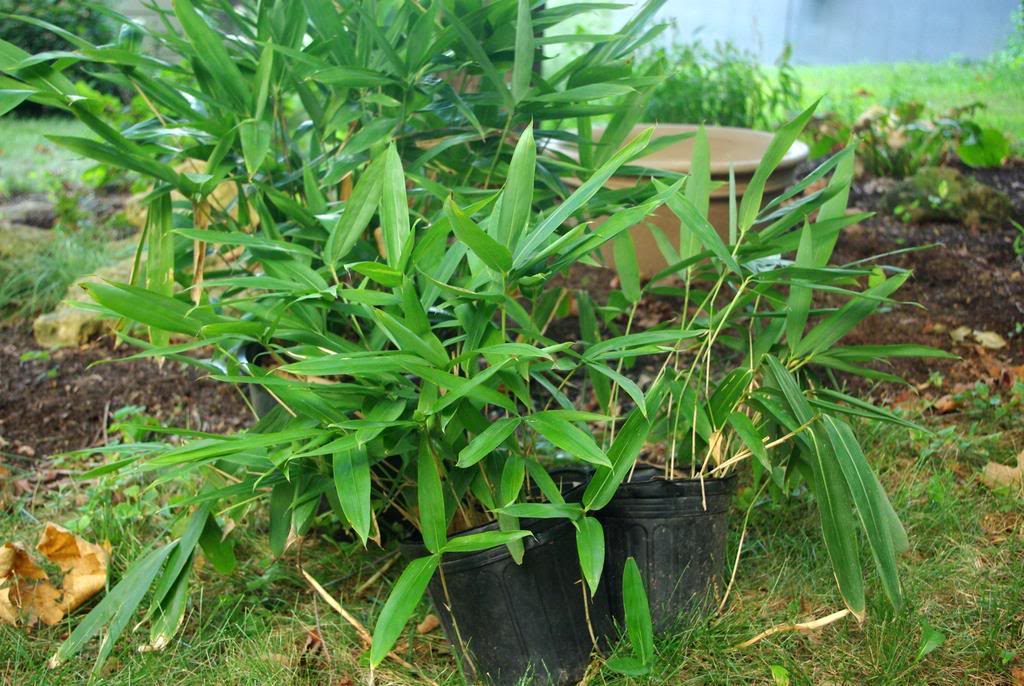 |
| Sasa tsuboinana |
You can see that the rhizomes are rather thin, and have no trouble coming out of the larger drainage holes in the nursery pots.
I'm also going to bury these pots somewhat:
This will give them more stability, looks better visually (as there is less pot showing above the ground), and will also provide good thermal contact with the ground. I'm most likely going to leave these pots out here through the winter, and although the airspace between the two layers will help insulate the roots, having a good connection to the thermal mass of the ground is very important too.
I would have liked to bury them a little deeper, but tree roots were in the way. A couple inches of mulch will help them look more deeply-buried.
So a little nice potting mix blended with some bagged topsoil, and the first pot is finished:
To the left you can see another empty spot that looks like it needs a pot too:
So the same procedure: dig 6" down or so (as far as I could go) to bury the pot. This is the fine root structure of the maple tree that these in-ground plants need to compete with:
I'm amazed that anything else can grow here!
For the second pot I chose to mix three different bamboo species together: Sasaella masamuneana 'Albostriata', Pleioblastus distichus, and Indocalamus tessellatus:
I think their different leaf forms will work well together. They'll start mixing in this pot in a year or so, but I should be able to keep it looking good by selectively removing culms that come up in the "wrong" place. I've not allowed bamboos to mix like this before, and I'm interested to see how it works.
So that's the job done, at least for now (except for some more mulch):
I think these pots should work well, and next year after these bamboos shoot (if they survive the winter) the pots will be much fuller and should look even better.
So I may have finally triumphed over the maple, and have the start of a decent-looking bed here. Time will tell though -- every plant I've put here before has looked great its first year.
.

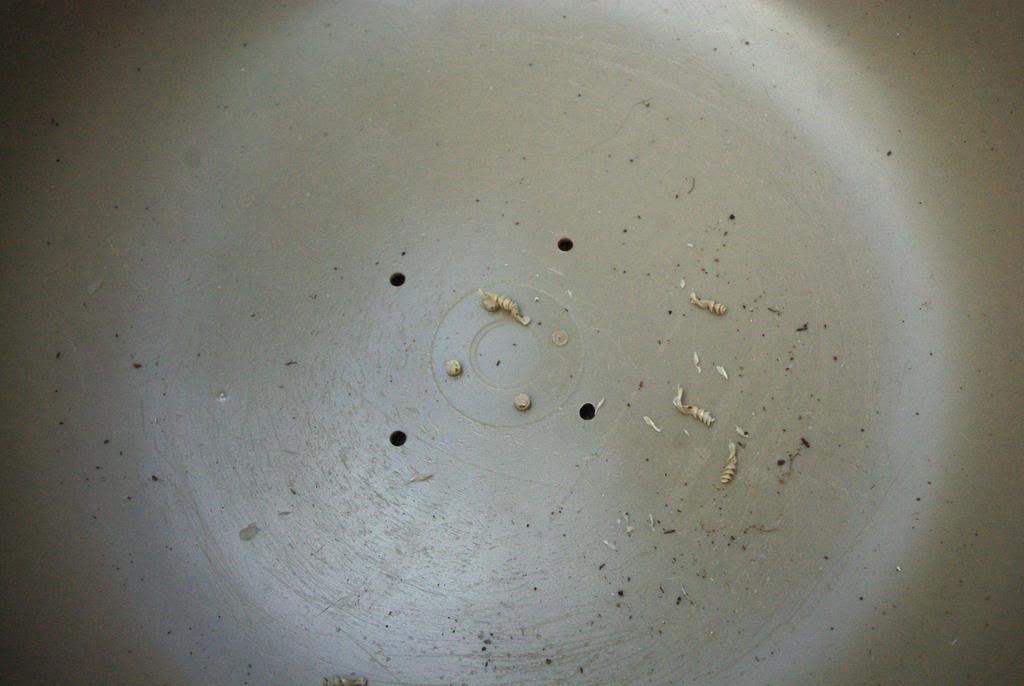
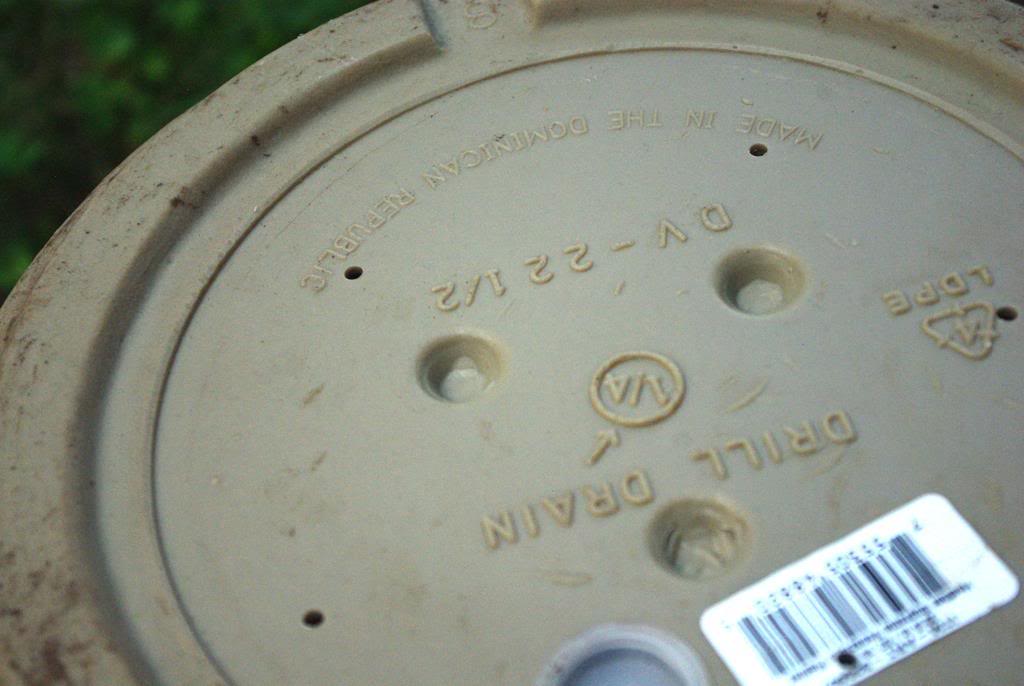

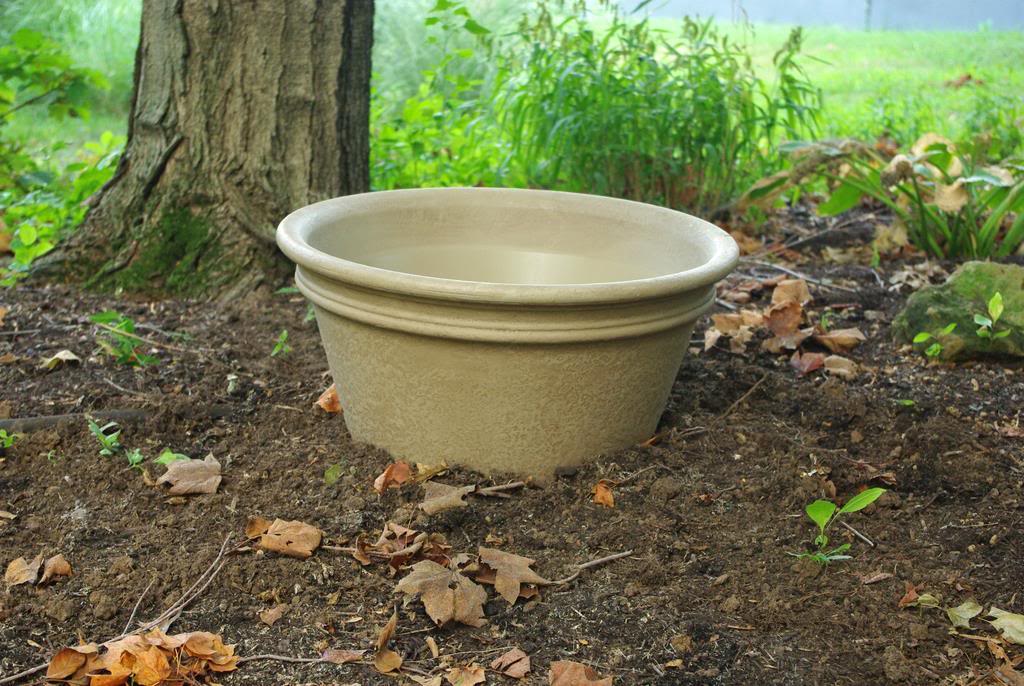
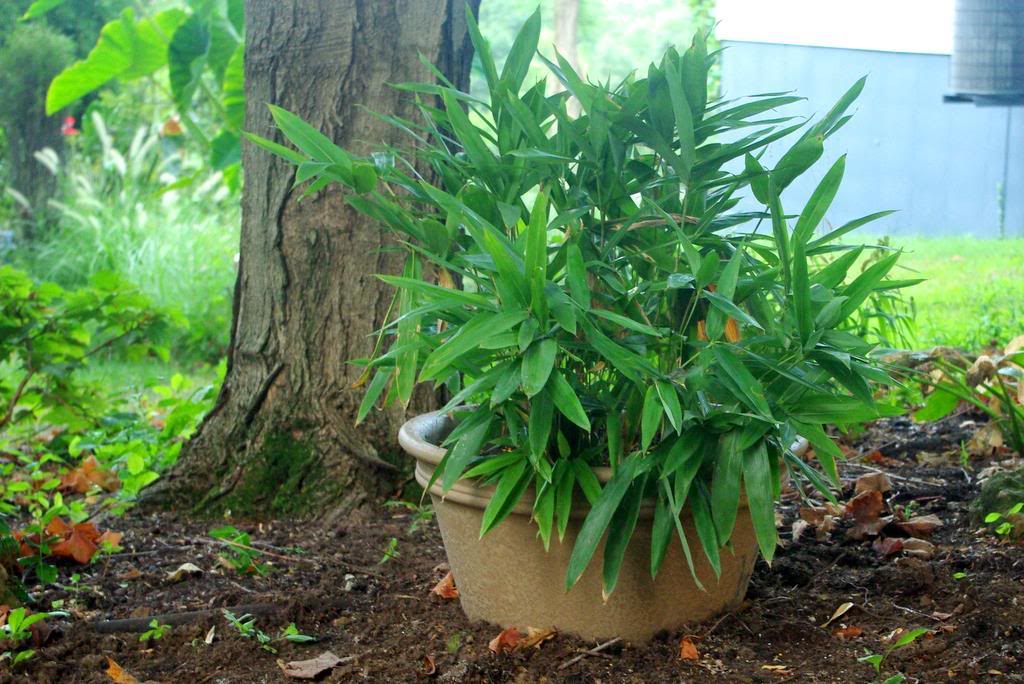
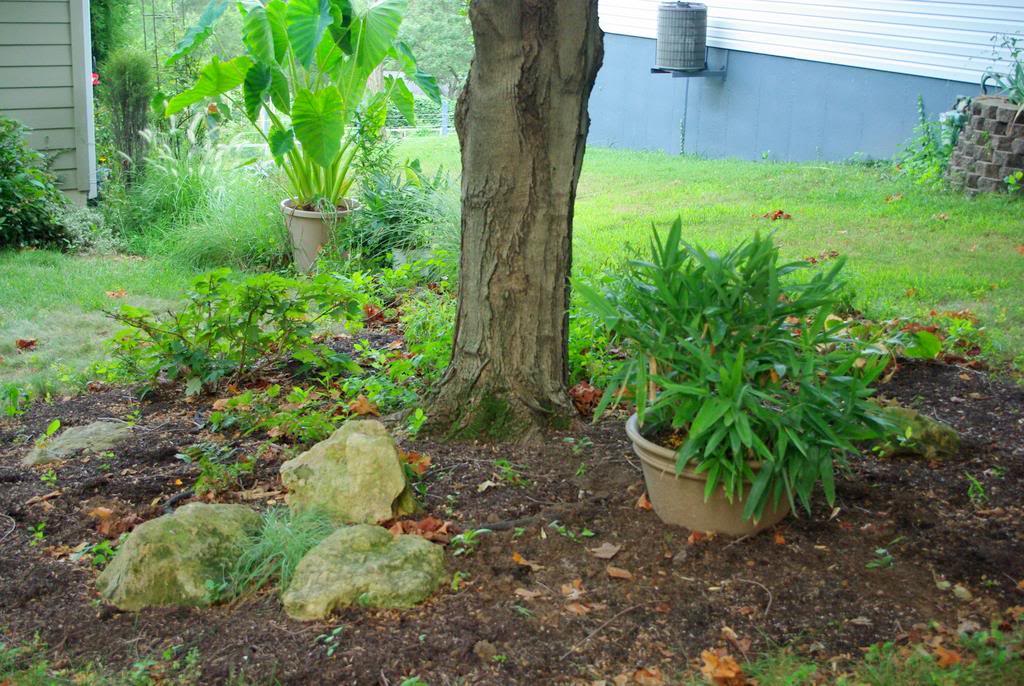

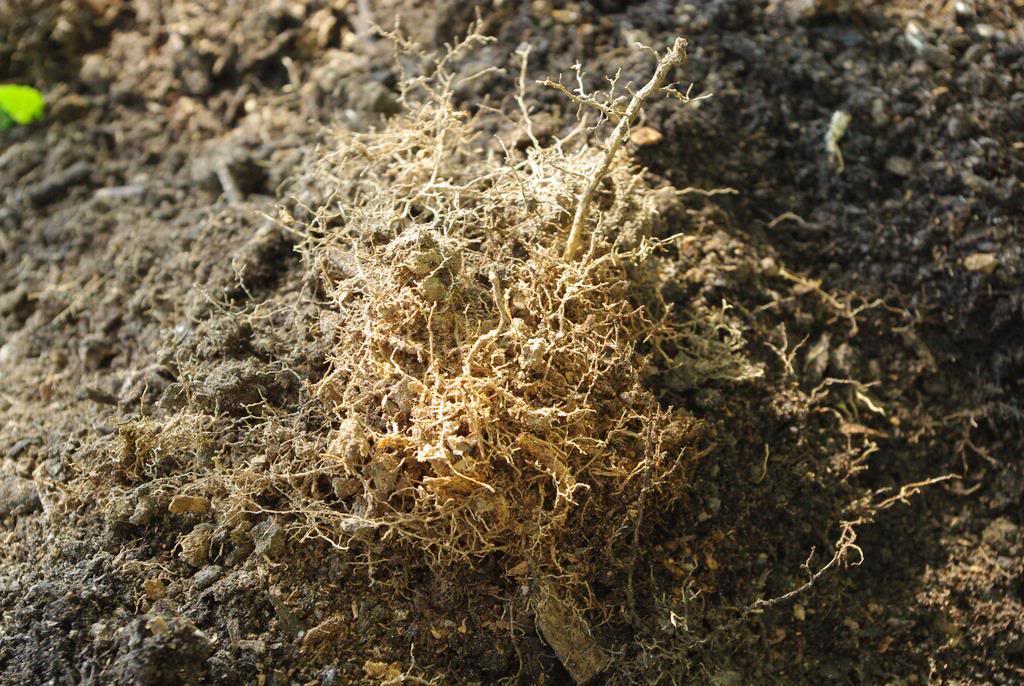
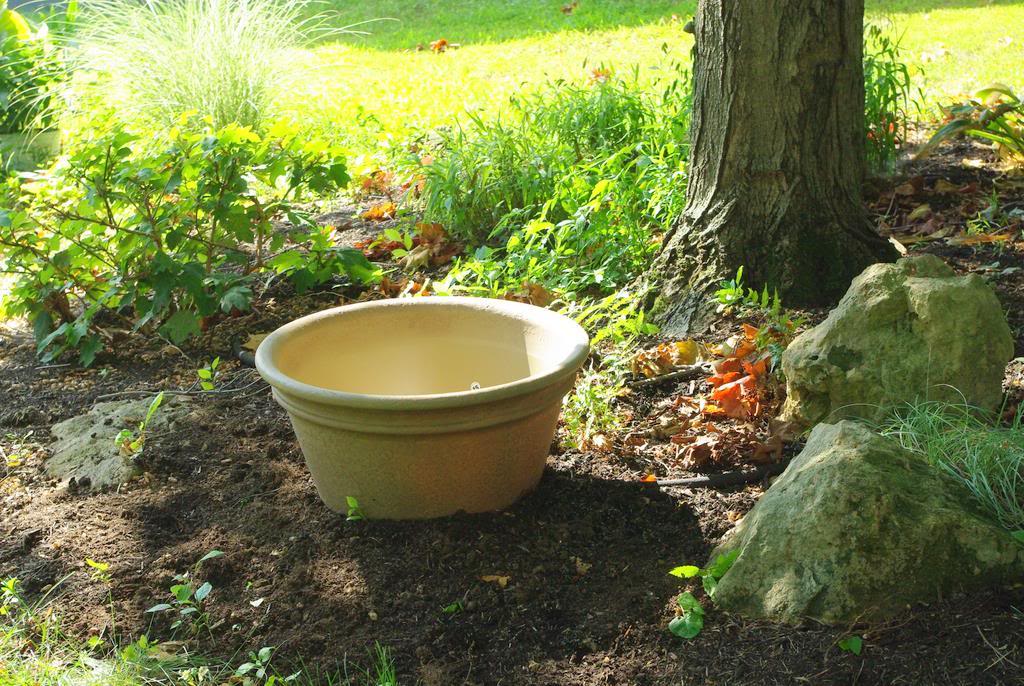
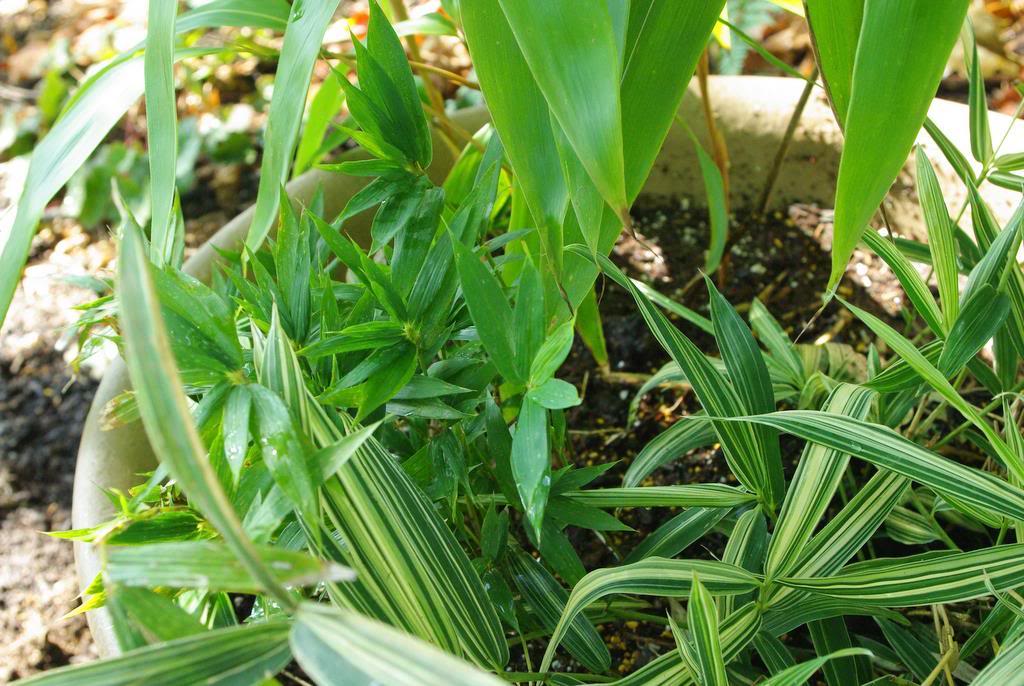
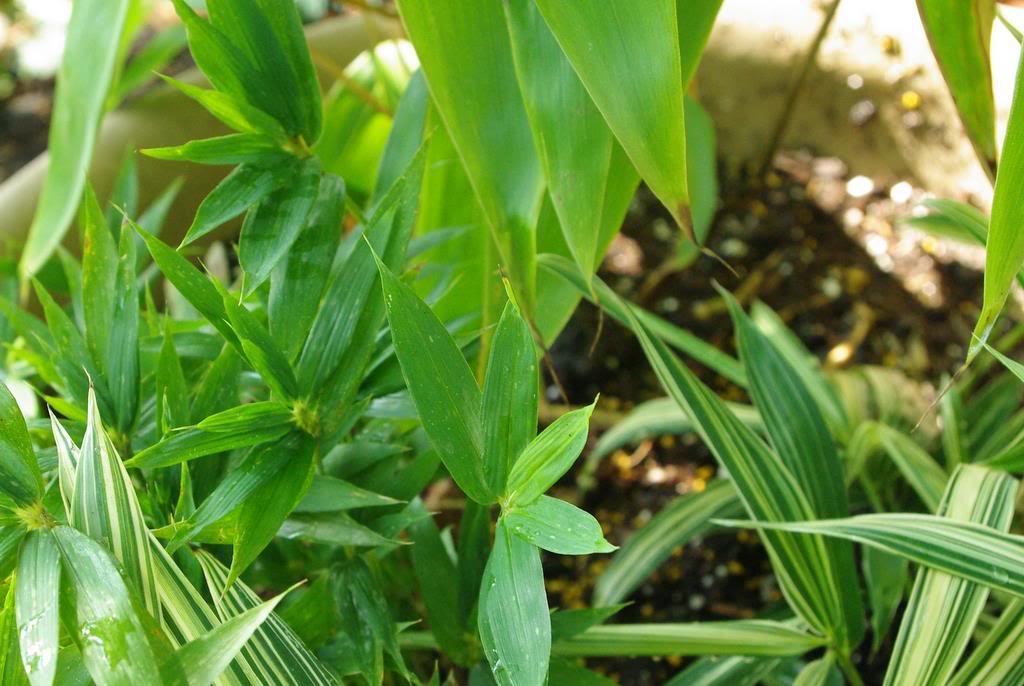


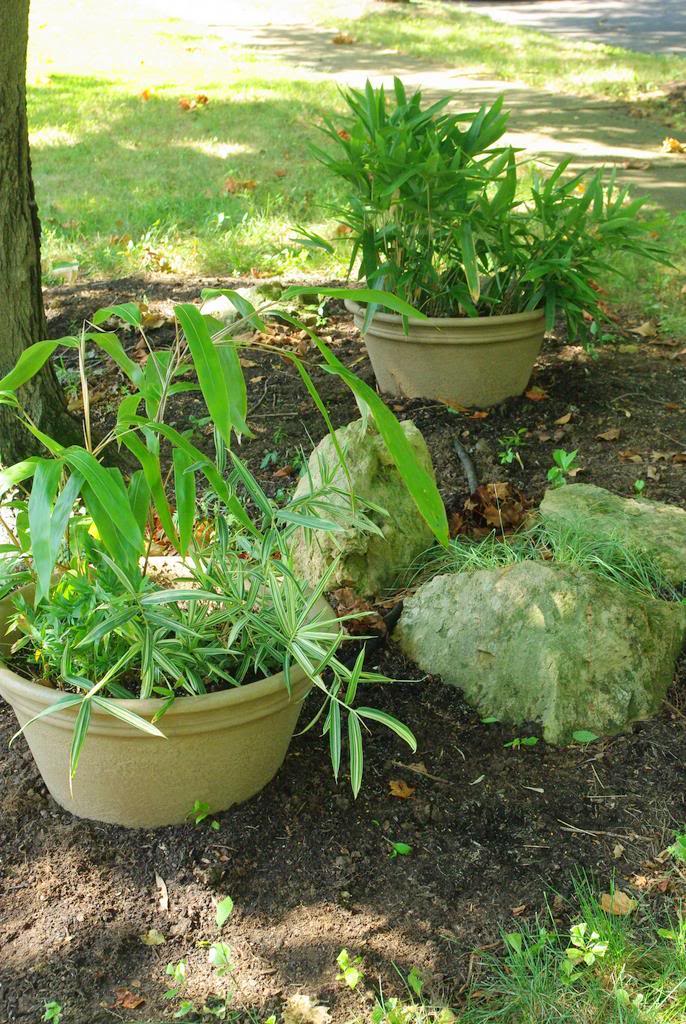




This is a fantastic solution. I can't wait to see what the mixed bamboo pot is going to look like next year.
The bay trees in our backyard present the same problem. That's why we bought 2x2x4 ft. metal stock tanks for bamboo. Except the bamboos I planted in there last year are slow to develop, or maybe I just don't have much patience :-).
Gerhard
:: Bamboo and More ::
I like the solution and will probably steal it now.
What an interesting idea! I'm developing a similar problem around a maple tree in the back yard.
Excellent solution but I do have another good idea for you. Split off 3 healthy divisions from one of your Fargesia dracocephala's and container plant them around the maple. Next year after they have filled up the pots with fibrous roots, plant them around the maple without containers.
M
M: Good idea, but two problems. First, I can't dig large holes here because of the big roots. Second, the bamboo will have the same problem as the hosta did -- it will be thirsty all the time and won't get any nutrients.
Ah, that is so clever! Gibven me an idea for under my endless trees!
PS: Looks great!!
Looking at this post again now, I think the variegated bamboo I put there is actually Pleioblastus fortunei. Don't know why I said it was the Sasaella.